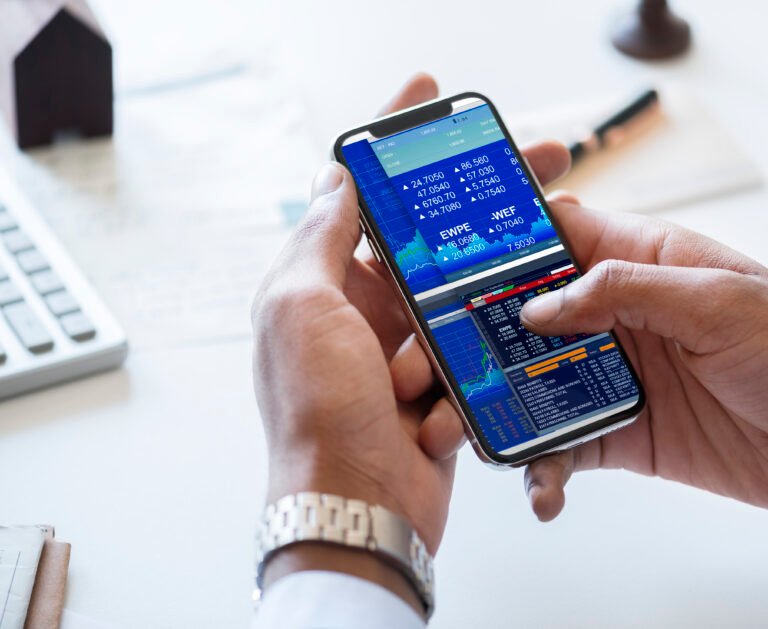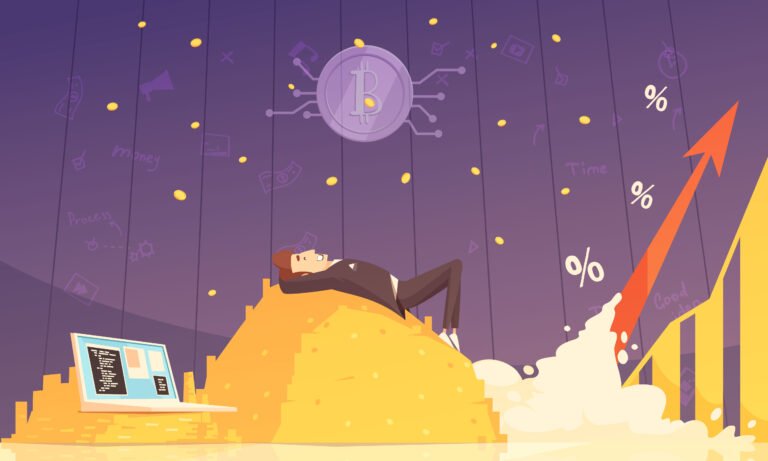9 Mistakes New Crypto Traders Make
1. Jumping in Without Education
Trading Without Understanding the Basics
Many new crypto traders skip the foundational knowledge and jump straight into buying coins because they saw a post on X (Twitter) or heard someone talk about it on YouTube. But without understanding market orders, volatility, liquidity, or even how wallets and blockchains work, you’re essentially gambling — not trading. Crypto has its own language, tools, and risks. Not knowing what you’re doing is the fastest way to lose money.

Table of Contents
Why Crypto Is Not Just Like Stocks
It’s a mistake to treat crypto trading like stock investing. While both involve charts and speculation, crypto markets are 24/7, far more volatile, and largely unregulated. This means price swings are more extreme, scams are more common, and the consequences of a bad decision can be immediate and severe. Unlike stocks, there are no circuit breakers or centralized bodies to protect your investment.
The Cost of Learning Through Losses
Many traders think they’ll “learn by doing,” but in crypto, that usually means learning by losing. And losses can pile up fast — especially during bull market hype cycles or flash crashes. While some losses are part of the journey, preventable ones due to lack of research or understanding are the most painful. Taking the time to study before entering a trade can literally save you thousands.
2. FOMO: Fear of Missing Out
Buying at the Top Because of Hype
One of the most common traps new traders fall into is buying an asset after it has already pumped — just because everyone else seems to be talking about it. When a coin is trending, it usually means early investors are already preparing to sell. Jumping in without analyzing the chart or understanding the timing often means buying at or near the top — and getting stuck when the price inevitably corrects.
How Social Media Fuels Bad Decisions
Platforms like Twitter (X), TikTok, and Telegram are full of self-proclaimed “crypto experts” hyping coins with flashy gains and rocket emojis 🚀. But what you don’t see are the losses, the market manipulation, or the vested interests behind those posts. Hype-driven decisions are rarely grounded in solid fundamentals or technical analysis — and more often than not, they’re designed to benefit someone else at your expense.
Emotional Trading = Expensive Mistakes
FOMO is pure emotion — and emotional trading almost always leads to poor decision-making. Whether it’s buying late, panic-selling early, or overtrading to “make it back,” emotions distort logic. Successful traders learn to control emotions, stick to a plan, and wait for their setup — not social media’s signal. In crypto, discipline beats excitement every time.
3. Ignoring Risk Management
Not Using Stop-Losses
A stop-loss is one of the simplest tools to protect your capital — yet many new traders skip it entirely. Without a stop-loss, a bad trade can drain your account quickly, especially in the volatile crypto market where 20% price swings in a single day aren’t uncommon. Setting a stop-loss doesn’t mean you’re negative — it means you’re smart enough to plan for what could go wrong.
Going All-In on One Coin
Putting all your capital into a single project — no matter how promising it looks — is extremely risky. Even strong coins can experience sudden crashes due to news, regulation, or market manipulation. Diversification is key. Spreading your risk across multiple trades or assets reduces the chance that one mistake or market move wipes you out completely.
Position Sizing 101 for Beginners
Position sizing is the art of deciding how much to invest in each trade based on your total portfolio and risk tolerance. Many beginners risk too much on a single trade, hoping for fast gains. But pros use formulas — like risking only 1–2% of their capital per trade — to stay in the game long term. Proper sizing protects you from emotional decisions and helps you survive losing streaks.
4. Overtrading and Chasing Every Move
Why More Trades Often Means More Losses
New traders often believe that trading more frequently equals making more profit. In reality, overtrading usually leads to more losses due to fees, slippage, and emotional exhaustion. Every trade carries risk — and if you’re jumping into every price movement without solid reasoning, you’re gambling, not trading. Quality setups beat quantity every time.
The Dangers of Short-Term Thinking
Trying to catch every pump, scalp every candle, or beat the bots on every small move leads to burnout and bad decisions. Short-term trades require quick execution, deep technical knowledge, and mental discipline — things most beginners haven’t mastered yet. Without a bigger-picture view, traders often miss long-term trends while chasing meaningless short-term noise.
Patience Pays in Volatile Markets
Crypto is a game of timing and patience. The best traders know when not to trade. Sometimes, the right move is to stay in stablecoins and wait for clearer setups. Letting the market come to you — rather than forcing trades — can improve your win rate and reduce stress. Remember: in crypto, survival is a strategy, and patience is a profit multiplier.
5. Blindly Following Influencers and Signal Groups
Not All “Experts” Are Reliable
Crypto is full of influencers who sound smart, but many of them have hidden agendas — like pumping coins they already own or selling courses and VIP groups. Just because someone has a large following or posts screenshots of big profits doesn’t mean they’re consistently profitable or trustworthy. Without transparency and verifiable track records, most are just marketing experts — not market experts.
How Paid Signals Can Lead to Rug Pulls
Paid signal groups often promise massive returns with “insider info” or “VIP calls,” but in reality, many are coordinated pump-and-dump schemes. You get in late, they get out early. Some groups even promote sketchy projects in exchange for tokens or payment — putting their subscribers directly in harm’s way. If a signal sounds too good to be true, it usually is.
Do Your Own Research (DYOR)
Following others blindly is the opposite of trading responsibly. Always DYOR — that means checking the project’s fundamentals, reading the whitepaper, verifying the team, and understanding the market conditions. Use influencers and groups only as idea starters — never as decision-makers. In crypto, your best signal is your own research, backed by logic, not hype.
6. Using Leverage Without Understanding It
The Double-Edged Sword of Margin Trading
Leverage allows you to control a larger position with a smaller amount of capital — and that sounds exciting, especially to new traders chasing fast profits. But leverage amplifies both gains and losses. A 5x or 10x leverage trade can wipe out your entire position on a small price move. Many beginners don’t realize that a 10% market dip with 10x leverage means you’re liquidated — game over.
Why Leverage Isn’t for Beginners
Using leverage without a deep understanding of volatility, stop-loss placement, and risk-reward ratios is like driving a race car without knowing how to brake. You need experience, emotional control, and solid risk management before even thinking about margin trading. Most professionals only use low leverage — and even they take heavy precautions.
How to Lose Everything in One Trade
It’s not uncommon for new traders to go all-in on a leveraged trade after watching a price pump — hoping to ride the momentum. But one sudden wick or market reversal can wipe them out completely. Exchanges love liquidations — that’s how they profit. If you don’t know exactly how liquidation works or where your margin call is, you’re setting yourself up for disaster.
7. Ignoring Security Best Practices
Storing Coins on Exchanges
Many beginners leave their crypto on centralized exchanges, thinking it’s convenient. But if that exchange gets hacked, freezes withdrawals, or shuts down, your funds could be gone forever. “Not your keys, not your coins” is more than a slogan — it’s a survival rule. For long-term holds, always use a private wallet (hardware or software) where you control the keys.
Falling for Phishing and Fake Airdrops
Scammers are everywhere in crypto. They’ll send fake links, create lookalike websites, or offer “airdrops” that require you to connect your wallet. One wrong click or signed transaction can drain everything. Beginners often fall for these tricks because they don’t know what to look for. If it looks too good to be true — or you feel rushed — stop and verify.
Not Using 2FA and Cold Wallets
Skipping basic security like two-factor authentication (2FA) is like leaving your house with the door wide open. Every exchange account and wallet should have 2FA enabled. Even better, store most of your assets in a cold wallet — a device not connected to the internet. It’s the safest way to store crypto and protects you from online threats and exchange failures.
8. Not Having a Clear Strategy
Trading Without Goals or a Plan
Jumping into trades because “the chart looks good” isn’t a plan—it’s a gamble. Effective traders set specific, measurable goals (e.g., “grow my account 10 % in six months” or “risk no more than 1 % per trade”). With clear objectives, you can choose tactics that support them—whether that’s swing trading, day trading, or long‐term investing. Without goals, every market wiggle feels like a call to action, and you end up reacting instead of executing.
Mixing Investing with Trading
Investing and trading require different mindsets and time horizons. Mixing them—like holding a coin “for the long term” one day, then panic‐selling it the next—creates confusion and inconsistent results. Decide upfront which assets are long‐term holds (fundamentally strong projects you’ll ride through cycles) and which are short‐term trades (technical setups with tight risk controls). Separating buckets keeps emotions at bay and performance easier to track.
The Importance of a Written Strategy
A written strategy is your personal rulebook: entry criteria, stop‐loss placement, profit targets, position sizing, and maximum daily loss. Writing it down forces clarity and accountability—you can’t fudge rules that are in black and white. Plus, when markets get hectic, your strategy acts as a checklist that keeps you from making impulsive decisions. As the saying goes: “Plan the trade, trade the plan.”
9. Letting Emotions Control Trades
Greed, Fear, and Revenge Trading
Crypto markets are emotional rollercoasters, and new traders often get caught in loops of greed (“I’ll double my money if I hold a little longer”), fear (“It’s dropping—I have to sell now!”), or revenge (“I need to win back what I just lost”). These emotional impulses override logic and lead to poor decisions. The most dangerous trades are the ones made from desperation or ego.
The Psychology of Losses
Losses hurt — but how you respond to them determines your long-term success. Beginners often spiral after a losing trade: doubling down, abandoning strategy, or quitting altogether. But even pros lose — the key is managing those losses and keeping them small. Accepting that losses are part of the game helps you detach emotionally and make better decisions going forward.
How to Build Mental Discipline
Discipline is what separates traders from gamblers. Set rules — and stick to them, even when it’s uncomfortable. Limit your screen time to avoid overreacting. Journal your trades to identify emotional patterns. And take breaks when needed. Crypto isn’t going anywhere, but your capital will if you let your emotions run the show. Control your mind, or the market will control you.
Conclusion: Learn, Adapt, and Survive
Mistakes Are Inevitable, But Repeating Them Isn’t
Every trader — even the pros — makes mistakes. It’s part of the journey. What separates successful traders from the rest is their ability to learn from those mistakes instead of repeating them. One blown trade won’t ruin you — but not evolving from it just might. Treat every misstep as a lesson, not a loss.
Keep a Trading Journal and Reflect
Want to improve? Track everything. A trading journal helps you analyze what worked, what didn’t, and why. Write down your entries, exits, emotions, and results. Over time, you’ll start to see patterns in both your performance and your psychology. Reflection leads to refinement — and that’s how real traders grow.
Education Is Your Best Investment
In a market where trends shift fast and hype spreads faster, knowledge is your strongest asset. Learn from trusted resources, study both wins and losses, and never stop updating your skills. Strategies come and go — but an educated trader will always adapt and survive.






